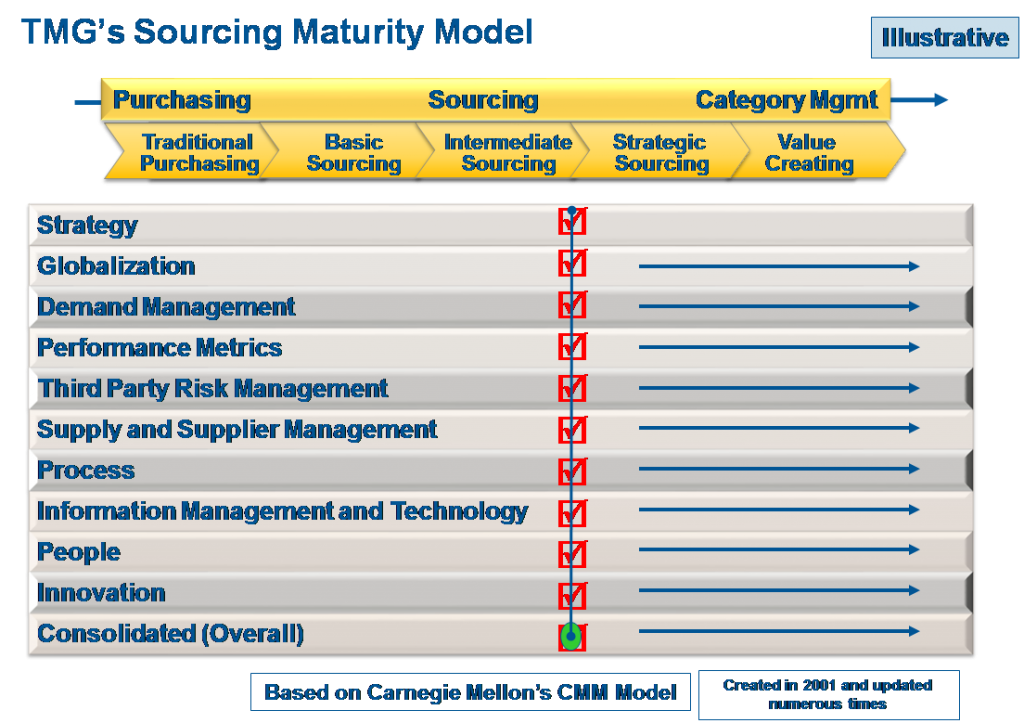For the last three weeks, we’ve been having a conversation around the difference between Strategic Sourcing and Category Management? This is a topic that got LOTS of attention and quite a bit of engagement from the readers of this blog 🙂 ! Stay tuned as we walk through the other elements of our Sourcing Maturity model in the coming weeks to continue to explore this highly controversial topic . . .

Today, I’d like to take a slight detour. When I try to articulate my overarching view of the difference between Strategic Sourcing and Category Management, it is centered around engagement and most importantly BUY-IN from both your internal stakeholders (the Business Units you serve) and your external stakeholders (the Suppliers you buy from). I often have clients tell me that they are already doing “Category Management”. Here are the two questions I ask in response:
- How much time do you spend with the senior leaders in the business unit under which your “category” resides?
- How much time do you spend with the Suppliers/ supply base within your “category”?
The answer to both questions needs to indicate that there is a collaborative relationship whereby you are deeply involved in the day to day business of your internal business partner AND you are spending enough time with your suppliers to explore ways to grow both of your businesses. When I hear “we have quarterly update / status meetings” I know that we are not speaking the same language. To me, the biggest difference between Strategic Sourcing and Category Management is an increased level of engagement on the front end (and throughout the entire process) in developing a category strategy that aligns with the strategy of your business units and drives value (that is defined by them) to meet their business needs AND increased engagement and collaboration on the back end with the supply base to increase innovation and extract mutual value from the relationship that goes way beyond the contract. If that does not sound easy, it’s because it is NOT. It requires the Procurement organization to play a role that it may not necessarily be comfortable with- the role of a trusted advisor.
When you have reached the Value Creating (Category Management) level of the maturity model, your organization is playing the role of (operating as) an internal consulting practice. One of the most important skills of a consultant is the ability to persuade your “customer” (internal – business unit /external – supplier) to action. When I listen to CPOs describe the skill gap they see in their staff, it most often centers around the ability to persuade – GET BUY-IN. There is an art to persuasion BUT there is also a science – it is the problem solving process. I use this process every day and teach it to my client’s Sourcing / Category Management teams as a way to help them increase their ability to engage and get buy-in from their stakeholders. I recently read an article in HBR “A Checklist for More Persuasive Presentations” which had some simple and easy to follow advice on how to put together a persuasive presentation (which I know we all use to GET BUY-IN). Here are a few good rules to follow:
- Clearly describe the problem you are trying to solve – what is your objective
- Why now? – create a burning platform for action AND explain the cost of not taking action
- Establish credibility – “highlight evidence of your competence” and provide examples of how you got to your recommendation
- Simplify your message – consider putting a structure or phased process around your recommendation that makes it easy for the audience to follow
- Tell a story – provide concrete examples that help bring facts and figures to life
- Always end with a call to action – the next steps OR the “ask” are not always obvious, so make sure you are clear in what you need
If there is a secret sauce for your organization in increasing your group’s ability to engage and influence both internal and external stakeholders, it is learning the problem solving (consulting) process. This is not necessarily a skill that you would quickly identify as required but it is THE difference in moving to Category Management!
Let us know what you think and join in the conversation . . . . . . . .


1 Comment
Pingback: How Never to Hire Another Consulting Firm – Present Company Excluded of Course - News You Can Use